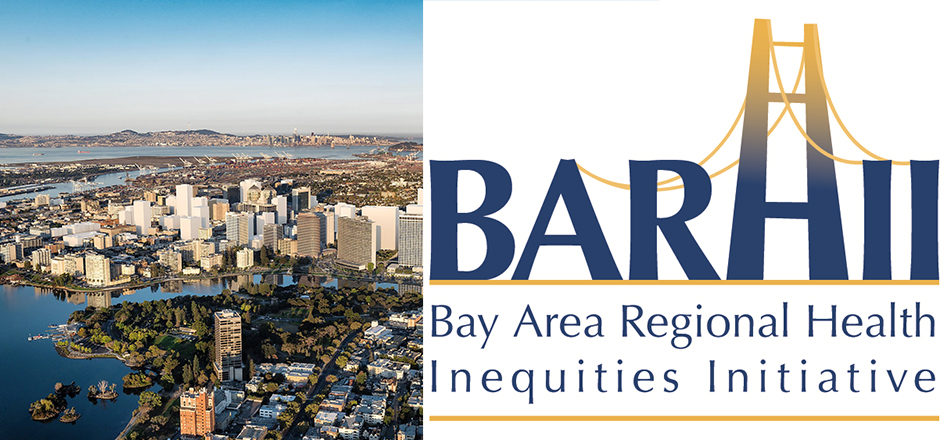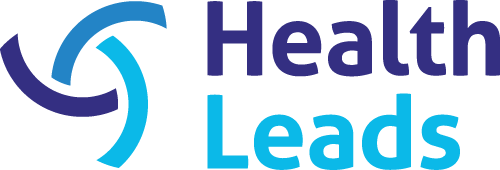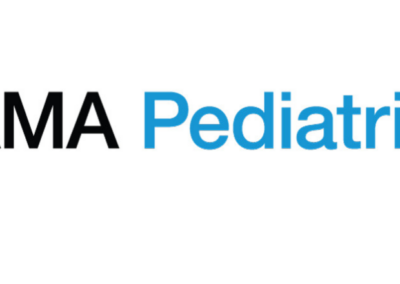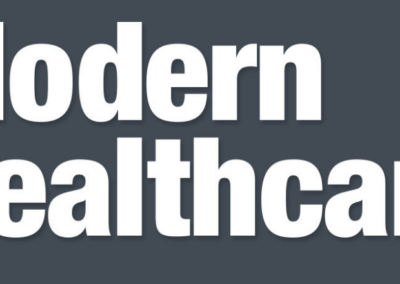Bay Area Regional Health Inequities Initiative: Fostering Community-Driven Change During COVID-19 and Beyond

The COVID-19 pandemic has deeply and rapidly changed our environment and tested the systems that hold up our health. We recently had a conversation with Melissa Jones, Executive Director of the Bay Area Regional Health Inequities Initiative (BARHII), to learn how her community has mobilized to meet the challenges of our new reality head on. We talked through what it means to build effective collaboration structures, push forward policy changes, and address the inequities that have been made more apparent than ever.
As the coalition of the Bay Area’s 11 public health departments, BARHII was created to work on issues that impact people’s health outside of healthcare, including economic opportunity and inclusion, housing affordability, and racial equity.
How has the COVID-19 pandemic impacted your work?
In the last few years, BARHII has focused heavily on the relationship between housing affordability and health. We’ve seen the impacts that housing instability has on our communities: more heart disease, more depression, more displacement, more homelessness. COVID-19 has exacerbated all of these issues; the pandemic’s rapid progression has meant that people have had their incomes change quickly while their major expenses remain constant. In an area like the Bay Area, where many people are already living paycheck to paycheck, a shock like this means that a lot of people are suddenly at risk to not be able to pay rent and to lose their housing. Housing instability then becomes a huge added factor to the stress and uncertainty that comes from COVID-19.
These issues are magnified for communities that already see wide health inequities. COVID-19 has disproportionately harmed communities of color, particularly African-American, Latinx, and Pacific Islander communities who are more likely to be essential workers and who must go out to work on a daily basis, while others can shelter in place. One of BARHII’s key efforts during this pandemic is to keep focus on these disparities, and not let them be sidelined as health systems struggle to maintain services.
What collaborations have been activated in the Bay Area in response to this crisis?
Prior to the pandemic, people in the Bay Area were already paying close attention to the issue of housing affordability. This awareness allowed us to quickly activate to form a coalition through Housing NOW! California to lobby the Governor to create protections against evictions during this time. At the same time, community groups worked hard with their elected officials to put together ordinances and local coalitions began organizing to pass eviction protections in local jurisdictions. BARHII provided model legislation and language to the counties that we work with, which resulted in several using the provided housing and health rationale to pass eviction moratoriums through their local boards of supervisors and city councils. As a result, all 9 Bay Area counties now have eviction moratoriums in place to protect tenants who have lost income due to the outbreak.
The City of Vallejo was one of the first in the region to pass an eviction moratorium, thanks to pressure from the community, who have been actively engaged in housing justice work for the last several years following massive rent hikes at the Strawberry Hill and Holiday Gardens apartment complexes. This push was led by the Vallejo Housing Justice Coalition, who is a key partner in BARHII’s housing work in the area, and who received seed funding thanks to a BUILD Health Challenge grant we received in 2019. They were soon followed by multiple other cities and counties, several of which directly used pieces of the language that we provided in their legislation. While not all eviction moratoriums are equally robust in the protections they offer tenants, we were able to create positive movement from the statewide level down to the city level.
What are the building blocks that have made it possible for the community to activate and respond so quickly?
The Bay Area has a strong history of community organizers, policy experts, and public health leaders all working together. COVID-19 has sharpened focus on the importance of community resilience to public health, and we have a strong community-wide commitment to health that we haven’t seen before.
At the center are the strong relationships that exist between communities. Knowing each other’s strengths and being able to connect with partners you have a deep working relationship with through a quick call or email, allows communities to bypass some of the biggest hurdles systems face during a disaster. BARHII serves as a vital link connecting policy experts to community organizers and community organizers to policy experts at the local, regional, and state level, thanks to the relationships we have built in both worlds.
Community organizers drive change; they bring power building and strategy pieces that include knowing the key players and what will unite their neighbors around a policy or systems change. Partnering with organizations that have deep policy knowledge means that community organizers can come to the table with a set of solutions to fix the challenges they name.
What steps can organizations take right now to support health equity?
We need better analysis of contract tracing data immediately to pinpoint the industries most at risk, and to reduce the spread in the communities of color who are most impacted. Healthcare institutions like hospitals and public health clinics can put in place stronger racial data collection protocols to ensure that consistent, accurate data is gathered on everything from testing requests to patient outcomes. Providers also need to be reminded of potential biases that they may not be thinking about when screening patients for COVID-19, and take active steps to eliminate or minimize those biases.
On top of that, it’s critical that we combat the lack of clarity that exists by getting targeted messages out to communities on how to stay safe.Many of the disparities that we are seeing in messaging access, particularly in the African-American community, are due to the lack of trusted messengers. Giving community leaders control of messaging and outreach could help break through those barriers.
How do we make sure our efforts to rebuild don’t repeat past mistakes in regards to inequity?
Our long-term recovery strategy must break the Bay Area’s long track record of racial inequity and get us to a better place. We need to push forward a strategy that creates a stable, sustainable financial base for families and doesn’t force people to live in overpriced, substandard housing. We need paid sick leave and access to care for everyone so that when people are sick, they aren’t forced to go into work or lose their housing. There is a range of supports which the United States has known is necessary for public health but which has not been equitably provided to all members of the community. COVID-19 has exposed these gaps, and underlined how racial inequity endangers public health. We must build equity into each part of our recovery, and create a new social compact that no longer hoards health and wealth.
As a resource, BARHII has developed and compiled a list of model ordinances and response efforts to COVID-19. Learn more about the coalition and what they are currently working on by visiting http://barhii.org.



